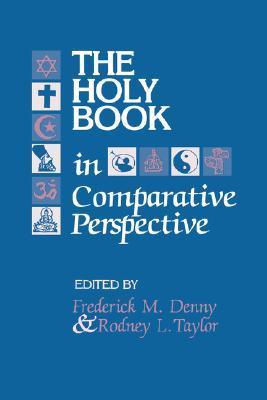
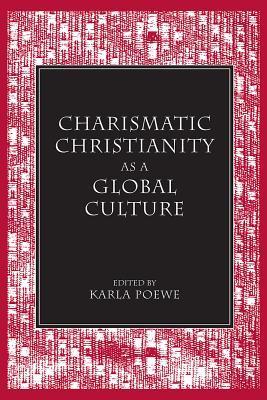
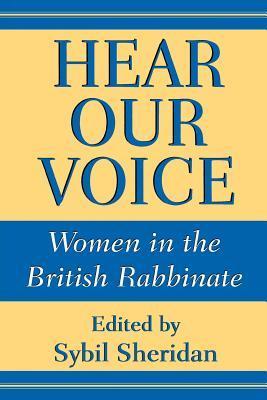
Studies in Comparative Religion
Series · 22
books · 1985-2016
Books in series

#1
The Holy Book in Comparative Perspective
1985
Ten noted religious studies scholars examine the sacred scriptures of Hinduism, Buddhism, Confucianism, Taoism, Islam, Zoroastrianism, Christianity, and Mormonism to produce an authoritative, comprehensive survey of the writings that shape the world's major religions. The Holy Book in Comparative Perspective concentrates on the origins, forms, and functions of scriptures in religious life. This volume also includes a thought-provoking chapter on the transmission of sacred traditions among nonliterate populations and a rebuttal of the widespread elevation of "primitive" traditions over literate traditions.

#2
Charismatic Christianity as a Global Culture
1994
Overcomes traditional scholarly bias to examine charismatic Christianity's multicultural appeal
The charismatic movement that began in the first century currently spans the globe. The term "charismatic" refers to the "gifts of the Holy Spirit"―speaking in tongues, healing, prophecy, and discernment―said to be available to Christians who have surrendered their lives to Christ. Charismatic Christianity as a Global Culture takes readers on a journey to discover the history of the movement and the reasons why more and more Christians are finding the charismatic experience so meaningful.
Leading scholars in the fields of religion and anthropology discuss the thought patterns and religious traditions of charismatics throughout the world. By examining believers throughout the Americas, Africa, Asia, and Europe, the contributors provide a comprehensive overview of a charismatic tapestry that appears to transcend national, ethnic, racial, and class boundaries.
In her introduction, Karla Poewe describes how believers attempt to integrate mind, body, and spirit, thereby providing for a more holistic religious experience. Poewe points out that charismatic Christianity and Pentecostalism have suffered from academic biases in the past; this book is one of the first to place the charismatic experience in an academic framework.

#3
Hear Our Voice
Women in the British Rabbinate
1998
Women rabbis relfect on their changing role in the profession
In this anthology by and about Jewish women, fifteen British rabbis discuss the changing role of Jewish clergywomen in the six decades since the private ordination of Regina Jonas, the first woman rabbi. Through personal testimony and scholarly inquiry, they take note of the legacy of their foremothers and grapple with what it means to be a Jewish woman on the eve of the twenty-first century.
The contributors profile women who led the struggle for recognition and respect in the Jewish world. They also recount their own stories, vividly describing the reasons they chose to enter the rabbinate and the challenges they face in the profession.
Delving into the interpretive process from which women have traditionally been excluded, the rabbis examine female role models found in the Hebrew Bible, biblical prophecy and the feminist vision, the authorship of the Song of Songs, and the matter of canonicity from a feminist perspective. They consider such questions as why Judaism has no "sayings of the mothers" and assess contemporary gender issues including Jewish feminist theology, inclusive language, segregated seating in synagogue, and the whole issue of the feminine in Judaism.
Important for Jews and for feminists in general, Hear Our Voice examines issues of significance for Christians as well, with some of the essays addressing the role of women in the Christian faith.
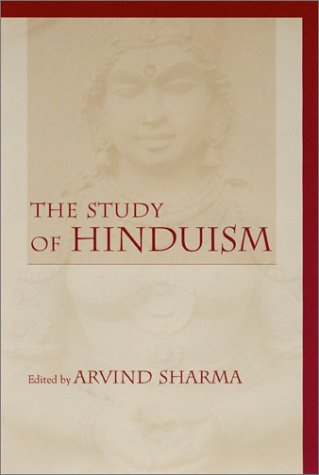
#6
The Study of Hinduism
2003
In this text, leading scholars from around the world take stock of two centuries of international intellectual investment in Hinduism. Since the early 19th century, when the scholarly investigation of Hinduism began to take shape as a modern academic discipline, Hindu studies has evolved from its concentration on description and analysis to an emphasis on understanding Hindu traditions in the context of the religion's own values, concepts and history. Offering an assessment of the current state of Hindu studies, the contributors to this volume identify past achievements and chart the course for what remains to be accomplished in the field.
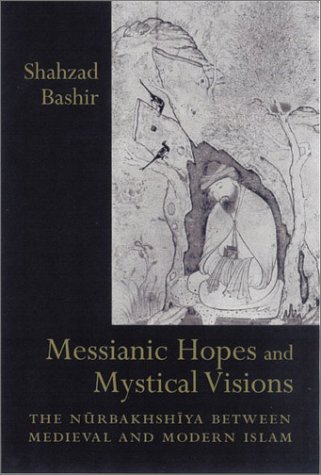
#7
Messianic Hopes and Mystical Visions
The Nurbakhshiya Between Medieval and Modern Islam
2003
A revealing look at a fifteenth-century messianic movement and its continuing relevance to Islamic sectarianism
Messianic Hopes and Mystical Visions tells the story of the Nurbakhshiya, an Islamic messianic movement that originated in fifteenth-century Iran and central Asia and survives to the present in Pakistan and India. In the first full-length study of the sect, Shahzad Bashir illumines the significance of messianism as an Islamic religious paradigm and illustrates its centrality to any discussion of Islamic sectarianism. By tracing Nurbakhshi activity in the Middle East and central and southern Asia through more than five centuries, Bashir brings to view the continuities and disruptions within Islamic civilization across regions and over time. Bashir effectively captures the way Nurbakhshis have understood and debated the meaning of their tradition in various geographical and temporal contexts.
Bashir provides a detailed biography of the movement's founder, Muhammad Nurbakhsh (d. 1464). Born to a Twelver Shi'i family, Nurbakhsh declared himself the mahdi, or the Muslim messiah, as an adept of the Kubravi Sufi order under the influence of the teachings of the great Sufi master Ibn al-'Arabi (d. 1240). Nurbakhsh's religious worldview, which Bashir treats in depth in this volume, offers a new window onto the intellectual world of the late medieval Islamic East.
Although Nurbakhsh met with limited success as a claimant to the title of mahdi during his lifetime, his movement prospered after his death as his disciples remained active in Timurid and Safavid Iran, central Asia, and Ottoman Anatolia. Bashir analyzes the spread of the Nurbakhshiya as well as its greatest sociopolitical triumph―transplantation into Kashmir in the late fifteenth and early sixteenth centuries, from where the movement extended into neighboring Ladakh and Baltistan. Making use of previously unexamined sources, Bashir recounts every phase of Nurbakshi history, paying particular attention to the reinterpretation and adjustment of the tradition in each local context.
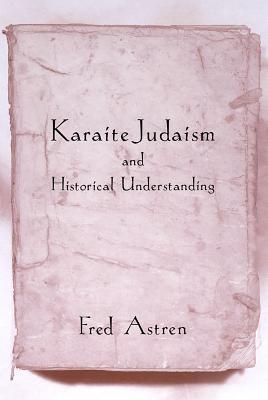
#8
Karaite Judaism and Historical Understanding
2004
Examines the changing relationship of this Jewish sect to rabbinic Judaism and the influence of Muslim and Christian environments
Notions of history and the past contained in literature of the Karaite Jewish sect offer insight into the relationship of Karaism to mainstream rabbinic Judaism and to Islam and Christianity. Karaite Judaism and Historical Understanding describes how a minority sectarian religious community constructs and uses historical ideology. It investigates the proportioning of historical ideology to law and doctrine and the influence of historical setting on religious writings about the past.
In the present volume, Fred Astren discusses modes of representing the past, especially in Jewish culture, and then poses questions about the past in sectarian, particularly Judaic sectarian, contexts. He contrasts early Karaite scripturalism with the literature of rabbinic Judaism, which, embodying historical views that carry a moralistic burden, draws upon the chain of tradition to suppose a generation-to-generation transmission of divine knowledge and authority. Karaites in the medieval Islamic world eschewed historical thinking, in concert with their rejection of the rabbinic concept of tradition. One important medieval Karaite, al-Qirqisani, however, constructed a sophisticated historical argument as part of his philosophical exposition of Karaism, demonstrating theological and philosophical strategies common in Islam and Christianity.
The center of Karaism shifted to the Byzantine-Turkish world during the twelfth through sixteenth centuries, when a new historical outlook unoblivious of the past accommodated legal developments influenced by rabbinic thought. Reconstructing Karaite historical expression from both published works and previously unexamined manuscripts, Astren shows that Karaites relied on rabbinic literature to extract and compile historical data for their own readings of Jewish history, which they recorded in an encyclopedic literature similar to contemporary Byzantine Christian Orthodox writing. Astren documents how as the Karaites moved toward a concept of tradition and echoed rabbinic historical formulations, they developed a version of the chain of tradition to link archaic biblical history to their own community.
During the seventeenth and eighteenth centuries, Karaite scholars in Poland and Lithuania collated and harmonized historical materials inherited from their Middle Eastern predecessors. Astren portrays the way that Karaites, with some influence from Jewish Renaissance historiography and impelled by features of Protestant-Catholic discourse, prepared complete literary historical works that maintained their Jewishness while offering a Karaite reading of Jewish history.
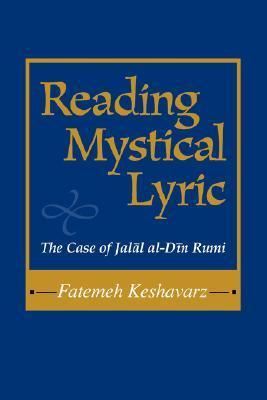
#9
Reading Mystical Lyric
The Case of Jalal Al-Din Rumi
1998
The first ciritcal approach to Rumi's canon of verse
Jalal al-Din Rumi, a towering figure in the Persian speaking world, is currently the most widely published poet in English translation. Yet despite the popularity of his verse, the majority of scholarship on his work focuses not on Rumi's poetry but on his contributions as a mystic. Fatemeh Keshavarz's pioneering study is the first extensive critical examination of this vast, dynamic body of literature. Through close readings of the Divan, his collection of more than 35,000 lyric verses, she explores Rumi's extraordinary popular and critical literary success.
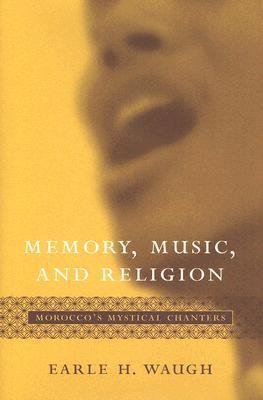
#10
Memory, Music, and Religion
Morocco's Mystical Chanters
2005
Brings new insights to the study of the religious function of memory
Why do religious communities remember some events and not others? Why do some kinds of music find a continuing place in worship while others seem to lose their appeal? Why is it that the Islamic tradition is understood so narrowly, even by some Muslims, when in fact it has a broadly textured history of belief and practice? In Memory, Music, and Religion, Earle H. Waugh addresses such probing questions while exploring a rich vein of Islam in Morocco―the mystical chanters. In this book, a detailed study of the interplay between memory, music, and religion, Waugh opens new areas of thought, particularly regarding a theme that cuts across religious the role of memory in religious formation.
Since the glorious days of Andalusia, Muslim poetic and musical traditions have found a vibrant home among Moroccan Sufis. Through rituals of dhikr, or remembrance, the old forms of music and word blend into a new form of worship for today. In this study, Waugh probes the depths of religious memory within Islam and notes the singular importance of memory in comprehending the meaning and styles of music. Showing how the powerful tradition of music nurtures the Muslim soul, Waugh brings new insights to the study of the religious function of memory.
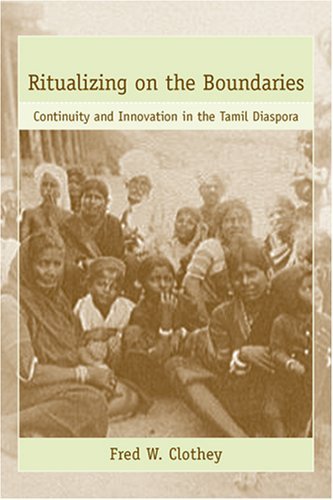
#12
Ritualizing on the Boundaries
Continuity And Innovation in the Tamil Diaspora
2006
A comparative study of the roles of ritual in four South Indian immigrant communities
For centuries and particularly since the 1830s, Tamils and other South Indians have become part of a diaspora that has scattered their identities and traditions, both real and invented, to cities around the world. In his comparative study of four Tamil resettlements, senior scholar Fred W. Clothey examines the rituals that have traveled with these South Indian communities―Hindu, Muslim, and Christian―and how these practices perpetuate or modify the heritages these groups claim for themselves in their new environs.
Clothey looks specifically at settlements in the cities of Kuala Lumpur, Malaysia; Singapore; Mumbai, India; and Pittsburgh, Pennsylvania. Describing such settlements as communities living on boundaries, Clothey explores how their existence illustrates divisions among ethnic, local, and global identities; between generations; and between imagined pasts and uncertain futures. He contends that one of the most visible ways expatriated communities negotiate these boundaries is through the use of ritual as manifested in the building of shrines and temples, the celebration of festivals, the perpetuation and modification of performances, and the enactment of ceremonies believed to have ancient roots.
In individual chapters Clothey examines the construction of Pittsburgh's Sri Venkateswara temple, one of the oldest and most authentic Hindu temples in the United States; explores the transition from temporary to permanent shrines in Singapore's Hindu community; compares how brahmins in Mumbai and Kuala Lumpur perpetuate subethnic identities in their shrines; and surveys Mumbai's slums to explore the worlds of Muslims, Christians, and castes of Hindus. He also reflects on the meanings of elaborate festivals in each of these cities and speculates about how the singing of hymns links the singers to their perceived lineage as well as to social configurations in their new homes. Such vignettes reveal how rituals serve to affirm a community's sense of heritage while at the same time reflecting their present circumstances. Through these case studies of the Tamil diaspora, Clothey suggests that rituals can create a process of being at home away from home.
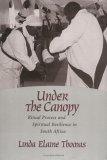
#13
Under the Canopy
Ritual Process and Spiritual Resilience in South Africa
1999
In an intensive study of one church community in South Africa, Thomas (anthropology and theology, Garrett Evangelical Theological Seminary) argues that some of South Africa's most oppressed people were able to overcome the stress of life under apartheid through their healing rituals. This book focuses on the new religion that the people of St. John's Apostolic Faith Mission Church in Guguletu, just outside Cape Town, created to help bring meaning to lives full of poverty and violence. It emphasizes particularly this community's rituals of healing which blend the world views of the native African faiths and the colonial Protestant faiths to form a cosmology that helps them live with everyday challenges. Annotation c. Book News, Inc., Portland, OR (booknews.com)
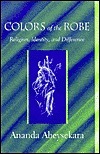
#15
Colors of the Robe
Religion, Identity, and Difference
2002
Colors of the Robe probes the Sri Lankan world of Buddhism and politics and suggests innovative directions for the global study of religion, culture, and violence. In a volume that surpasses other studies in locating Sri Lankan Buddhism in its sectarian, ethnic, cultural, social, and political constructions, Ananda Abeysekara illuminates the shifting configurations that animate the relations connected with postcolonial religious identity and culture.
Drawing on extensive field research in Sri Lanka, Abeysekara illustrates how differing discourses about Buddhism come into central view and then fade. He develops the concept of "minute conjunctures of contingency" and places it in modest opposition to the Foucauldian (and postcolonial) conceptions of history and identity. Abeysekara suggests that the conjunctures of contingency help realize that Buddhism, identity, and difference do not remain simply available for disciplinary apprehension. This way of thinking about the unavailability of Buddhism, he contends, has profound political implications for how we might more generally think about and begin to disrupt entrenched presumptions of postcolonial cultural difference.
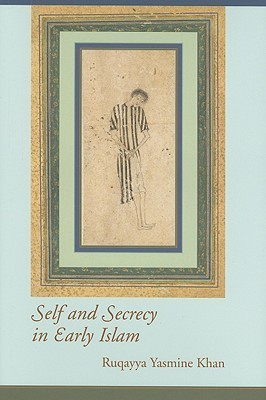
#16
Self and Secrecy in Early Islam
2008
An original inquiry into the meanings of concealment and revelation in early Arabo-Islamic texts
In this comparative analysis of the significance of keeping and revealing secrets in early Islamic culture, Ruqayya Yasmine Khan draws from a broad range of Arabo-Islamic texts to map interconnections between concepts of secrecy and identity. In early Islamic discourse, Khan maintains, individual identity is integrally linked to a psychology of secrecy and revelation―a connection of even greater importance than what is being concealed or displayed. Khan further maintains that secrecy and identity demarcate boundaries for interpersonal relations when governed by the cultural norms of discretion espoused in these texts.
As evidence for her study, Khan explores religious and literary representations of secrecy in classical texts as diverse as the Qur'an, the Book of Concealing the Secret and Holding the Tongue by al-Jahiz, and courtly love poems, including the story of Majnun and Layla. These works represent divergent approaches to spiritual, ethical, and romantic life in early Islam; yet Khan extrapolates from each a shared construction of secrecy and revelation.
In advancing our understanding of the dynamic tensions between secrecy and revelation as depicted in these early Arabo-Islamic discourses, Khan illustrates that the creation of individual identity and subjectivity was inherently tied to these same tensions. The resulting analysis opens new vistas for understanding the meanings of secrecy in Islamic studies, Qur'anic studies, Islamic philosophy and mysticism, Arabic literary studies as well as European intellectual history.
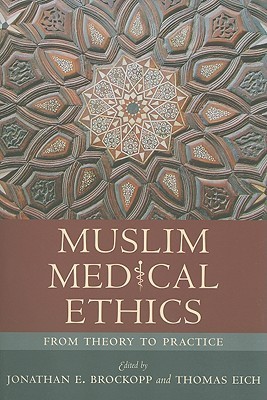
#17
Muslim Medical Ethics
From Theory to Practice
2008
Muslim Medical Ethics draws on the work of historians, health-care professionals, theologians, and social scientists to produce an interdisciplinary view of medical ethics in Muslim societies and of the impact of caring for Muslim patients in non-Muslim societies. Edited by Jonathan E. Brockopp and Thomas Eich, the volume challenges traditional presumptions of theory and practice to demonstrate the ways in which Muslims balance respect for their heritage with the health issues of a modern world.
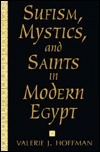
#18
Sufism, Mystics, and Saints in Modern Egypt
1995
For centuries Sufism - Islamic mysticism - held a major place in Islamic spirituality, intellectual life, and popular religion. While many twentieth-century observers have commented on Sufism's decline, and modernists and fundamentalists alike have criticized the movement, few scholars have analyzed present-day Egyptian Sufism as a system in its own right rather than as a degradation of the classical ideal. Drawing on detailed fieldwork and on textual analysis of a variety of little-known recent and medieval sources, Valerie J. Hoffman presents Sufism as it exists in Egypt today, in the vivid experiences of its adherents, from humble housewives to famous mystics and saints. With an array of conclusions that overturn widely held beliefs about modern Sufis, Hoffman argues that the apparent assimilation of Egyptian Sufism masks a thriving movement hidden from the Western world.
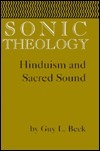
#19
Sonic Theology
Hinduism and Sacred Sound
1993
Traditionally Hinduism has appealed to Western eyes though its rich tableau of visual temple architecture, sculpture, painting, craft. Guy Beck argues, however, that the focus of Western scholars on Hinduism's visual component has often been at the expense of the religion's most important feature - its emphasis on sound. Beck addresses this longstanding imbalance in this pathbreaking study. He contends that sound possesses a central place in Hindu theory and practice and that Hinduism is essentially a sonic theology.
Unlike religious traditions that emphasize silence, the Hindu world is permeated by sound. Drums, bells, gongs, cymbals, conches, flutes, and an array of vocalizations play a central role in the worship experience. Beck provides a theoretical exposition of the major textual sources of Hindu sacred sound, namely the Vedas, Upanishads, Mimamsa, Grammar, Yoga, Saiva-Agama, Sakta-Tantra, and Vaisnava Pancaratra. From the Vedic Vak as "spoken word" to the Sabda-Brahman of the Upanishads, Mimamsa, and Grammar, and on to the Nada-Brahman of Yoga, Saivism, Saktism, Vaisnavism, and Indian classical music, Beck argues that sound participates at every level of the Hindu cosmos. As he weaves the theology of sound throughout Hindu textual traditions, Beck provides ample, coherent justifications of the practical use of sound in Mantra repetitions, Om recitations, and Nada-Brahman meditational techniques. He compares the centrality of sound in Hindu theology to its role, or its absence, in other religions. The issues Beck raises about sound and language not only reshape our understanding of Hindu worship but also invite a fresh approach to comparative theology.
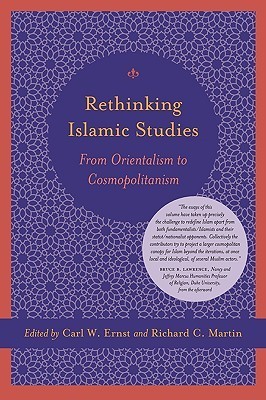
#22
Rethinking Islamic Studies
From Orientalism to Cosmopolitanism
2010
A groundbreaking response to the challenges of interpreting Islamic religion in the post-9/11 and post-Orientalist era
Rethinking Islamic Studies upends scholarly roadblocks in post-Orientalist discourse within contemporary Islamic studies and carves fresh inroads toward a robust new understanding of the discipline, one that includes religious studies and other politically infused fields of inquiry.
Editors Carl W. Ernst and Richard C. Martin, along with a distinguished group of scholars, map the trajectory of the study of Islam and offer innovative approaches to the theoretical and methodological frameworks that have traditionally dominated the field. In the volume's first section the contributors reexamine the underlying notions of modernity in the East and West and allow for the possibility of multiple and incongruent modernities. This opens a discussion of fundamentalism as a manifestation of the tensions of modernity in Muslim cultures. The second section addresses the volatile character of Islamic religious identity as expressed in religious and political movements at national and local levels. In the third section, contributors focus on Muslim communities in Asia and examine the formation of religious models and concepts as they appear in this region. This study concludes with an afterword by accomplished Islamic studies scholar Bruce B. Lawrence reflecting on the evolution of this post-Orientalist approach to Islam and placing the volume within existing and emerging scholarship.
Rethinking Islamic Studies offers original perspectives for the discipline, each utilizing the tools of modern academic inquiry, to help illuminate contemporary incarnations of Islam for a growing audience of those invested in a sharper understanding of the Muslim world.

#25
Mount Fuji
Icon of Japan
2011
Illustrated with color and black-and-white images of the mountain and its associated religious practices, H. Byron Earhart's study utilizes his decades of fieldwork—including climbing Fuji with three pilgrimage groups—and his research into Japanese and Western sources to offer a comprehensive overview of the evolving imagery of Mount Fuji from ancient times to the present day. Included in the book is a link to his twenty-eight minute streaming video documentary of Fuji pilgrimage and practice, Sacred Mountain of Japan.
Beginning with early reflections on the beauty and power associated with the mountain in medieval Japanese literature, Earhart examines how these qualities fostered spiritual practices such as Shugendo, which established rituals and a temple complex at the mountain as a portal to an ascetic otherworld. As a focus of worship, the mountain became a source of spiritual insight, rebirth, and prophecy through the practitioners Kakugyo and Jikigyo, whose teachings led to social movements such as Fujido (the way of Fuji) and to a variety of pilgrimage confraternities making images and replicas of the mountain for use in local rituals.
Earhart shows how the seventeenth-century commodification of Mount Fuji inspired powerful interpretive renderings of the "peerless" mountain of Japan, such as those of the nineteenth-century print masters Hiroshige and Hokusai, which were largely responsible for creating the international reputation of Mount Fuji. In the eighteenth and nineteenth centuries, images of Fuji served as an expression of a unique and superior Japanese culture. With its distinctive shape firmly embedded in Japanese culture but its ethical, ritual, and spiritual associations made malleable over time, Mount Fuji came to symbolize ultranationalistic ambitions in the 1930s and early 1940s, peacetime democracy as early as 1946, and a host of artistic, naturalistic, and commercial causes, even the exotic and erotic, in the decades since.

#26
Sonic Liturgy
Ritual and Music in Hindu Tradition
2011
Sonic Liturgy: Ritual and Music in Hindu Tradition builds on the foundation of Guy L. Beck s earlier work, which described the theoretical role of sound in Hindu thought. Sonic Liturgy continues the discussion of sound into the realm of Hindu ritual and musical traditions of worship.
Beginning with the chanting of the Sama-Veda alongside the fire sacrifices of the ancient Indo-Aryans and with the classical Gandharva music as outlined in the musicological texts of Bharata and Dattila, Beck establishes a historical foundation for an in-depth understanding of the role of music in the early Puja rituals and Indian theater in the vernacular poetry of the Bhakti movements in medieval temple worship of Siva and Vishnu in southern India, and later in the worship of Krishna in the northern Braj region. By surveying a multitude of worship traditions, Beck reveals a continuous template of interwoven ritual and music in Hindu tradition that he terms sonic liturgy, a structure of religious worship and experience that incorporates sound and music on many levels.
In developing the concept and methods for understanding the phenomenon of sonic liturgy, Beck draws from liturgical studies and ritual studies, broadening the dimensions of each, as well as from recent work in the fields of Indian religion and music."
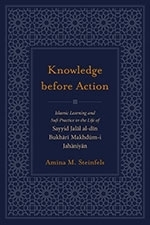
#27
Knowledge before Action
Islamic Learning and Sufi Practice in the Life of Sayyid Jalal al-din Bukhari Makhdum-i Jahaniyan
2012
Knowledge before Action examines medieval Sufism and its place in Islamic society by telling the story of the life and career of Sayyid Jalal al-din Bukhari, a revered figure in Pakistan. Considered one of the most important Sufi masters of South Asia, Sayyid Jalal al-din Bukhari, more popularly referred to as Makhdum-i Jahaniyan, is known for combining spirituality and scholarship in a formative period for Sufism. Steinfels assembles the details of Bukhari's life from records of his teachings, dynastic chronicles, and correspondence to discover how he achieved his status and laid the groundwork for a devotional cult that has lasted seven centuries. Steinfels also examines Bukhari's theories of the relationship between scholar and mystic. Bukhari's teachings provide windows into the underlying concerns and themes of medieval Sufism.
Knowledge before Action describes Bukhari's training as a scholar and a Sufi, his exercise of religious authority over his disciples, and his theories of the relationships between saint and shaykh. Knowledge before Action discusses ritual and contemplative practices, the economic bases of Sufi institutions, and the interconnectedness between Sufi masters, the 'ulama, and the political authorities by telling the story of Bukhari.
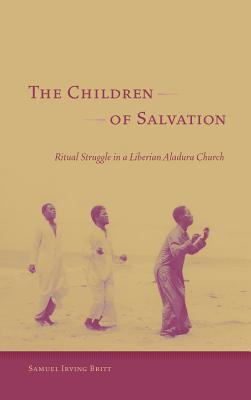
#28
The Children of Salvation
Ritual Struggle in a Liberian Aladura Church
2012
Founded in West Nigeria in the early twentieth century, the Aladura Church combines traditional Christian liturgy, a theology of the Spirit, and creative ritual strategies and social practices and has expanded to nearly one million adherents worldwide. Aladura faith practices emphasize the role of the prophet-healer who embodies virtue (spiritual power) and guides the faithful along a journey of ritual struggle toward salvation. Through the study of St. Peter's United Church of the Lord, an Aladura community in the Republic of Liberia, Samuel Irving Britt explores the relationship between worldview and ritual action in the church as well as the influence of Nigerian and Liberian traditions in shaping its character. This study provides the first in-depth study of an African Initiated Church in Liberia. Through the lens of theology, ethnography, and ritual studies, Britt helps us understand the church's role in Liberia and its diaspora communities throughout the world. Looking first at the various healing rituals among the Aladura churches, he investigates the notion of the ritual struggle and its relationship to the events and trends of the past thirty years. By acknowledging the effect of ritual struggle on St. Peter's, Britt explains the importance of religious life in understanding the Liberian civil war, occult cosmologies, new Liberian and Aladura diasporas, and the global surfacing of the Pentecostal mission. The Children of Salvation offers an understanding of Liberian spirituality, the Aladura's ritual struggle in the cultural order, and the ever-present hope for restoration in a war-torn community.
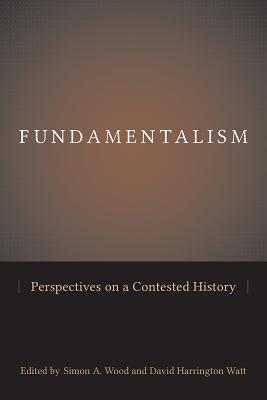
#30
Fundamentalism
Perspectives on a Contested History
2014
Essays considering how global fundamentalism influences our understanding of modern Christianity, Judaism, and Islam
Thirty years after the Iranian Revolution and more than a decade since the events of 2001, the time is right to examine what the discourse on fundamentalism has achieved and where it might head from here. In this volume editors Simon A. Wood and David Harrington Watt offer eleven interdisciplinary perspectives framed by the debate between advocates and critics of the concept of fundamentalism that investigate it with regard to Christianity, Islam, and Judaism. The essays are integrated through engagement with a common selection of texts on fundamentalism and a common set of questions about the utility and disadvantages of the term, its varied application by scholars of particular groups, and the extent to which the term can encompass a cross-cultural set of religious responses to modernity.
Although the notion of fundamentalism as a global phenomenon dates from around 1980, the term itself originated in North American Protestantism approximately six decades earlier and acquired pejorative connotations within five years of its invention. Since the early 1990s, however, many scholars have endorsed the view that the notion of fundamentalism―as relying on literalist interpretations of the scriptures, firm commitment to patriarchy, or refusal to confine religious matters to the private sphere―facilitates our understanding of modern religion by enabling us to identify and label structurally analogous developments in different religions. Critics of the term have identified problems with it, above all that the idea of global fundamentalism confuses more than it clarifies and unjustifiably overlooks, downplays, or homogenizes difference more than it identifies a genuine homogeny.
The editor's rigorous exploration of both the usefulness and the limitations of the concept make it an excellent counterpoint to the many books that have a great deal to say about the former and very little to say about the latter. It will also serve as an ideal text for religious studies, history, and anthropology courses that explore the complex interface between religion and modernity as well as courses on theory and method in religious studies.
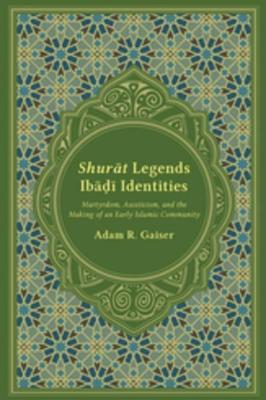
#33
Shurat Legends, Ibadi Identities
Martyrdom, Asceticism, and the Making of an Early Islamic Community
2016
In Shurāt Legends, Ibāḍī Identities, Adam Gaiser explores the origins and early development of Islamic notions of martyrdom and of martyrdom literature. He examines the catalogs or lists of martyrs (martyrologies) of the early shur?t (Kh?rijites) in the context of late antiquity, showing that shur?t literature, as it can be reconstructed, shares continuity with the martyrologies of earlier Christians and other religious groups, especially in Iraq, and that this powerful literature was transmitted by seventh century shur?t through their successors, the Ib??iyya. Gaiser examines the sources of poems and narratives as quasi-historical accounts and their application in literary creations designed to meet particular communal needs, in particular, the need to establish and shape identity.
Gaiser shows how these accounts accumulated traits—such as all-night prayer vigils, stoic acceptance of death, and miracles—-of a wider ascetic and apocalyptic literature in the eighth century, including martyrdom narratives of Eastern Christianity. By establishing focal points of piety around which a communal identity could be fashioned, such accounts proved suitable for use in missionary activity in North Africa and the Arabian Peninsula. Gaiser also documents the reshaping of these narratives for more quietist purposes: emphasizing moderated rather than violent action, diplomacy, and respect for other Islamic sects as also being monotheistic, rather than condemning them as sinful.
Along with refashioning narratives, Gaiser details the Ib??? efforts to compile collections into genealogies, both biographical dictionaries and lineages of the true faith linking individuals and communities to local saints and martyrs. He also shows how this more nuanced history led to the formation of rules and authorities governing the shur?t. Employing rarely examined manuscript materials to shed light on such processes as identity formation and communal boundary maintenance, Gaiser traces the course by which this martyrdom literature and its potentially dangerous implications came to be institutionalized, contained, and controlled.
Authors
Fatemeh Keshavarz
Author · 2 books
Fatemeh Keshavarz is professor of Persian and comparative literature and chair of the Department of Asian and Near Eastern Languages and Literatures at Washington University in St. Louis. She is author of four previous books, including "Reading Mystical Lyric: The Case of Jalal Al-Din Rumi" and a volume of poetry."